Discover 11 hidden attractions, cool sights, and unusual things to do in Llangollen (United Kingdom). Don't miss out on these must-see attractions: Pontcysyllte Aqueduct, Pistyll Rhaeadr, and Valle Crucis Abbey. Also, be sure to include Castell Dinas Brân in your itinerary.
Below, you can find the list of the most amazing places you should visit in Llangollen (Wales).
Table of Contents
Pontcysyllte Aqueduct
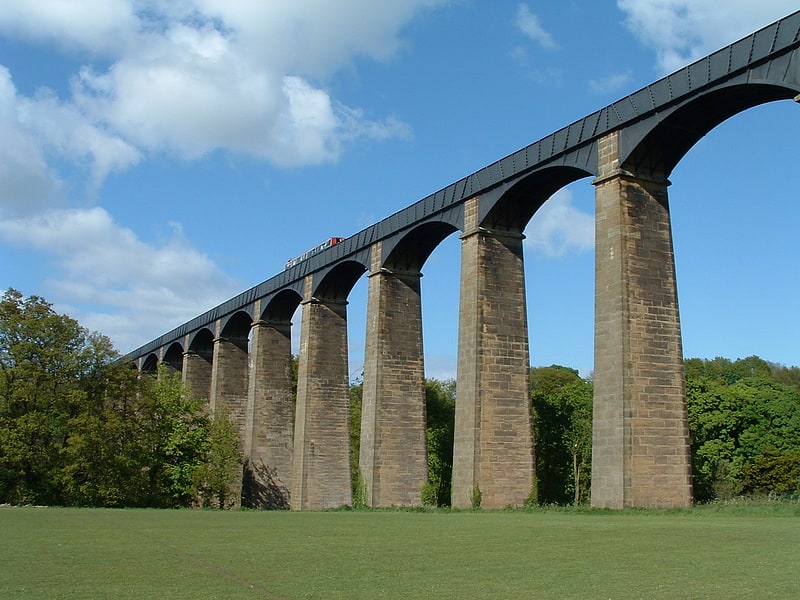
Iconic arched structure with boat rides. The Pontcysyllte Aqueduct is a navigable aqueduct that carries the Llangollen Canal across the River Dee in the Vale of Llangollen in northeast Wales.
The 18-arched stone and cast iron structure is for use by narrowboats and was completed in 1805 having taken ten years to design and build. It is 12 ft (3.7 metres) wide and is the longest aqueduct in Great Britain and the highest canal aqueduct in the world. A footpath runs alongside the watercourse on one side.
The aqueduct was to have been a key part of the central section of the proposed Ellesmere Canal, an industrial waterway that would have created a commercial link between the River Severn at Shrewsbury and the Port of Liverpool on the River Mersey. Although a less expensive construction course was surveyed further to the east, the westerly high-ground route across the Vale of Llangollen was preferred because it would have taken the canal through the mineral-rich coalfields of North East Wales. Only parts of the canal route were completed because the expected revenues required to complete the entire project were never generated. Most major work ceased after the completion of the Pontcysyllte Aqueduct in 1805.
The structure is a Grade I listed building and part of a UNESCO World Heritage Site.[1]
Address: Station Rd, LL20 7TG Trevor
Pistyll Rhaeadr
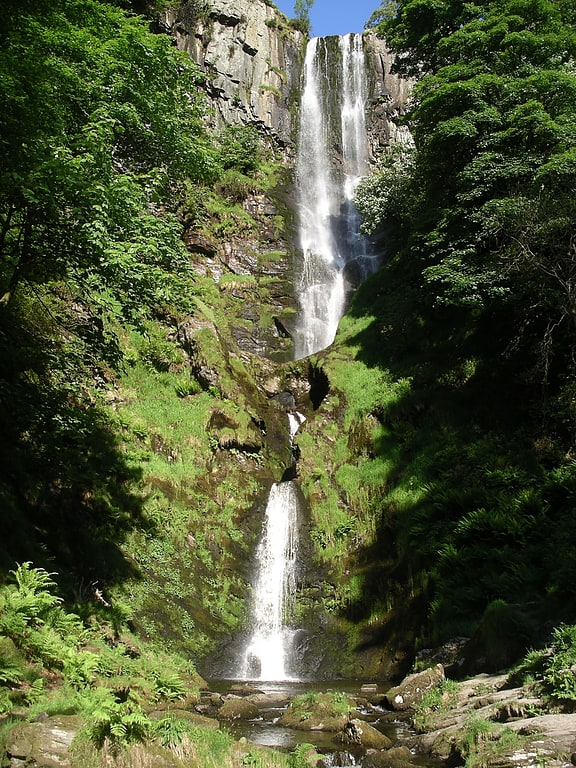
Waterfall in Wales. Pistyll Rhaeadr is a waterfall 4 miles from the village of Llanrhaeadr-ym-Mochnant in Powys, Wales and 16 miles west of Oswestry.[2]
Address: Llanrhaeadr ym Mochnant, SY10 0BZ Llanrhaeadr ym Mochnant
Valle Crucis Abbey

Abbey in Wales. Valle Crucis Abbey is a Cistercian abbey located in Llantysilio in Denbighshire, Wales. More formally the Abbey Church of the Blessed Virgin Mary, Valle Crucis it is known in Welsh both as Abaty Glyn Egwestl and Abaty Glyn y Groes. The abbey was built in 1201 by Madog ap Gruffydd Maelor, Prince of Powys Fadog. Valle Crucis was dissolved in 1537 during the Dissolution of the Monasteries, and subsequently fell into serious disrepair. The building is now a ruin, though large parts of the original structure still survive. Valle Crucis Abbey is now under the care of Cadw. The abbey received 5,690 visitors in 2018.[3]
Castell Dinas Brân
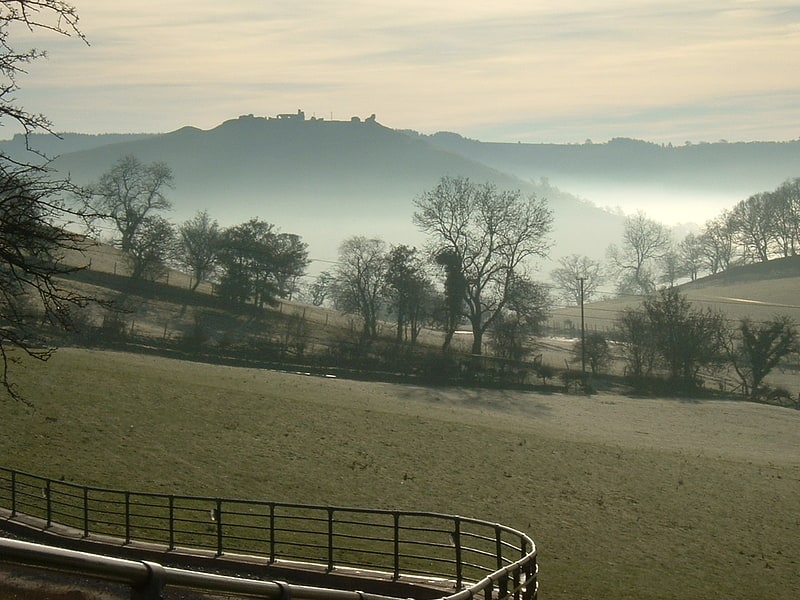
Medieval castle in Llangollen, Wales. Castell Dinas Brân is a medieval castle occupying a prominent hilltop site above the town of Llangollen in Denbighshire, Wales. The presently visible castle was probably built in the 1260s by Gruffydd Maelor II, a prince of Powys Fadog, on the site of several earlier structures, including an Iron Age hillfort.
Dinas Brân has been variously translated as the "crow's fortress" or "fortress of Brân", with Brân as the name of an individual or of a nearby stream. An English name, "Crow Castle", has also been used since at least the 18th century.[4]
Address: Wern Rd, LL20 8TG Llangollen
Llangollen Canal

Canal. The Llangollen Canal is a navigable canal crossing the border between England and Wales. The waterway links Llangollen in Denbighshire, north Wales, with Hurleston in south Cheshire, via the town of Ellesmere, Shropshire. The name, which was coined in the 1980s, is a modern designation for parts of the historic Ellesmere Canal and the Llangollen navigable feeder, both of which became part of the Shropshire Union Canals in 1846.
The Ellesmere Canal was proposed by industrialists at Ruabon and Brymbo, and two disconnected sections were built. The northern section ran from Ellesmere Port on the River Mersey to Chester, where it joined the Chester Canal, and opened in 1795. Work on the southern section began at Frankton, with a line southwards to Llanymynech, and subsequently, a second section was built westwards towards Trevor. This involved crossing the Afon Ceiriog and the River Dee, which was achieved by building two vast aqueducts, using iron troughs to contain the water. The Ceiriog was crossed at Chirk, and Chirk Aqueduct opened in 1801, to exploit local supplies of iron and coal. The canal then passed through Chirk Tunnel, and reached the southern end of Pontcysyllte Aqueduct in 1802, which was not completed until 1805. To join the two halves up, a heavily engineered route from Trevor Basin via Ruabon and Brymbo to the River Dee at Chester was planned, but very little of it was built. Instead, the present route from Frankton to Hurleston Junction on the Chester Canal was constructed, and opened in 1805. As the route never reached the water reservoir at Moss Valley, Wrexham (built in 1786), a navigable feeder was built to Llantisilio where the Horseshoe Falls weir was constructed on the River Dee to supply the canal.
As part of the Shropshire Union system, the canal from Hurleston to Llangollen thrived until the end of the First World War, after which it saw very little traffic. Navigation was formally abandoned under the terms of an Act of Abandonment obtained by the owners, the London Midland and Scottish Railway, in 1944, but the channel was retained as it still supplied water to the main line of the Shropshire Union, and subsequently to the Mid & South East Cheshire Water Board. This arrangement was due to end in 1954, but as there was no alternative supply of water, the powers were extended. Early pioneering cruises of the waterway were made by Tom Rolt in 1947 and 1949, and despite it being officially closed, a number of boats started to use it. There was a growing campaign to reopen it, but it was still designated as one of the 'waterways having insufficient commercial prospects to justify their retention for navigation' under government papers published in 1955 and 1958. It was not until the passing of the Transport Act 1968 that the route was finally designated as a cruiseway, and its future was secured. As leisure use of the canals grew, the route was rebranded as "The Llangollen Canal" in the 1980s, and it has become one of the most popular routes for holidaymakers. Its importance in the history of the British canal system was recognised in 2009, when the 11-mile (18 km) stretch from Gledrid Bridge near Rhoswiel to Horseshoe Falls including Pontcysyllte and Chirk aqueducts was declared a World Heritage Site by UNESCO.[5]
Llangollen Bridge
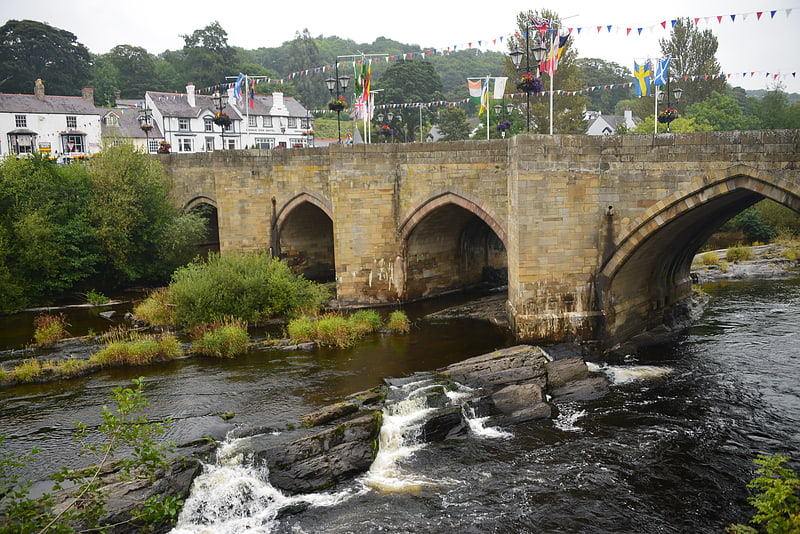
Bridge in Llangollen, Wales. Llangollen Bridge is built across the River Dee at the North end of the high street of Llangollen in the county of Denbighshire in North-east Wales. The Bridge is listed as one of the seven wonders of Wales and is a Grade I listed building.
There has been a bridge across the Dee at Llangollen since at least 1284, though the current bridge appears to date to the 16th or 17th century when an earlier bridge was rebuilt. The current bridge has been enlarged numerous times since then, doubling in width. The bridge is still in use.
The local high school Ysgol Dinas Bran graduating classes have a yearly tradition (oft discouraged) of jumping into the river Dee from the bridge[6]
Horseshoe Falls
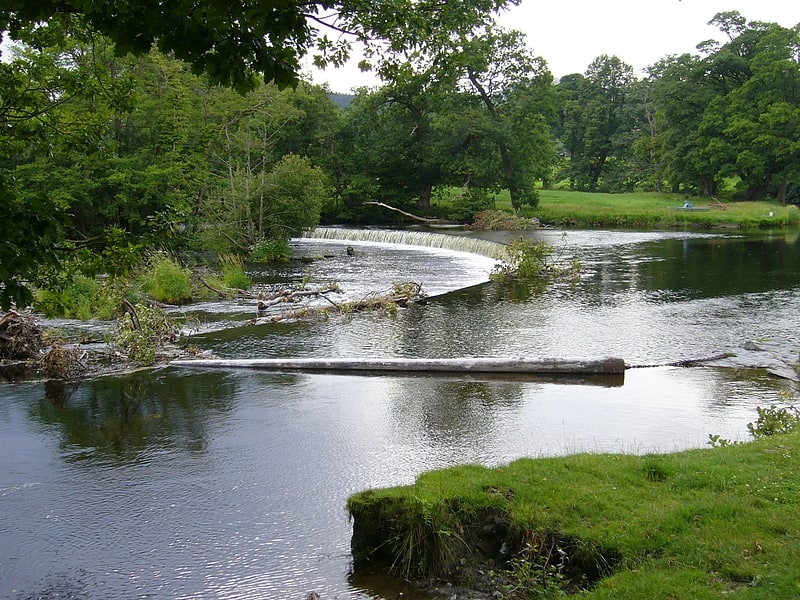
Places of interest in Llangollen, Wales. Horseshoe Falls is a weir on the River Dee near Llantysilio Hall in Denbighshire, Wales, about 5 kilometres north-west of the town of Llangollen.[7]
Plas Newydd
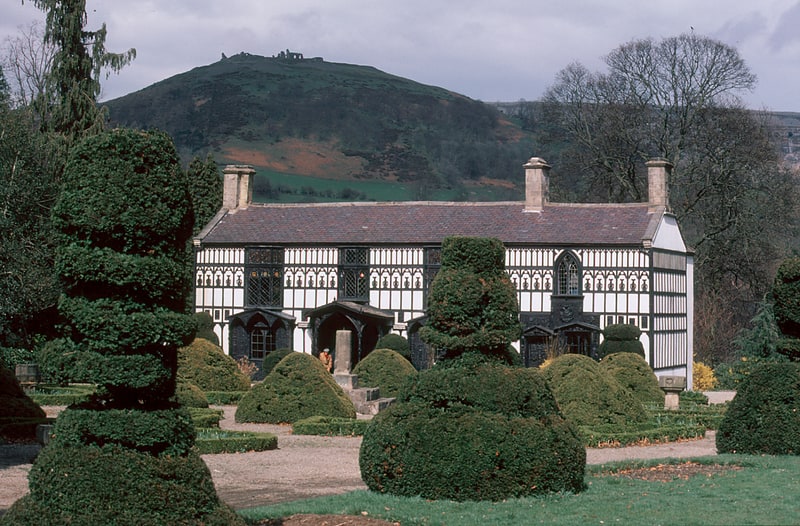
Museum in Llangollen, Wales. Plas Newydd is a historic house in the town of Llangollen, Denbighshire, Wales, and was the home of the Ladies of Llangollen, Lady Eleanor Butler and Sarah Ponsonby, for nearly 50 years. Today, it is run as a museum by Denbighshire County Council.[8]
Address: Hill Street, LL20 8AW Llangollen
Llangollen Motor Museum

Museum in Pentrefelin, Wales. The Llangollen Motor Museum is a small museum and autojumble source near Llangollen, Wales established in 1986.[9]
Address: 542 A, LL20 8EE Llangollen
Llangollen Canal Museum
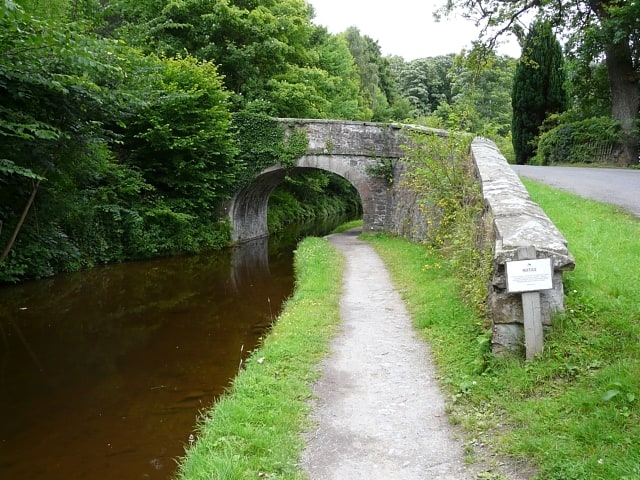
Llangollen Canal Museum is a Grade II listed building in Llangollen.
Listed by Cadw (Reference Number 1225) and thought to have been built between 1804 and 1808, it was originally a single storey warehouse but was later heightened to two stories and extended in red brick.
Despite its name, it is no longer a museum and is not open to the public.[10]
ProAdventure
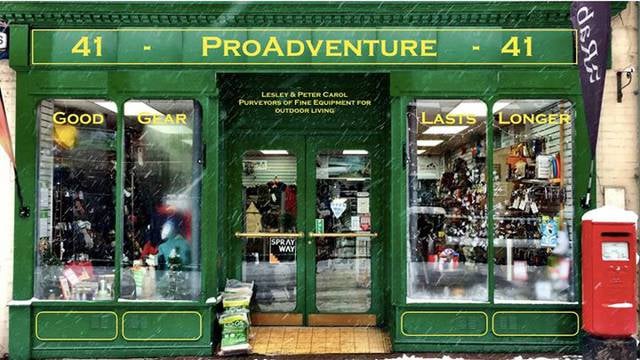
Climbing tours, Kayaking, Rafting, Adrenaline and extreme tours, Tours, Outdoor activities
Address: Parade Street, LL20 8PW Llangollen